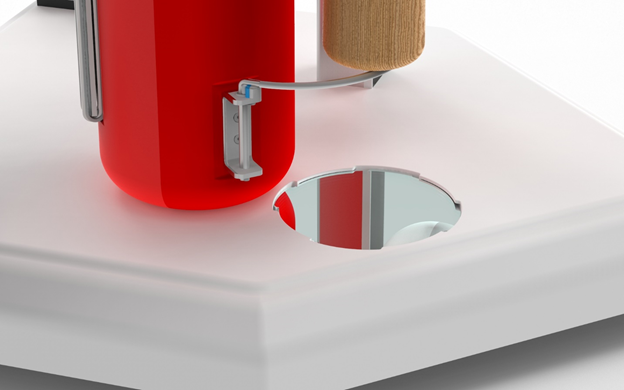
the INVENTION where

and

col> <lide
<lide
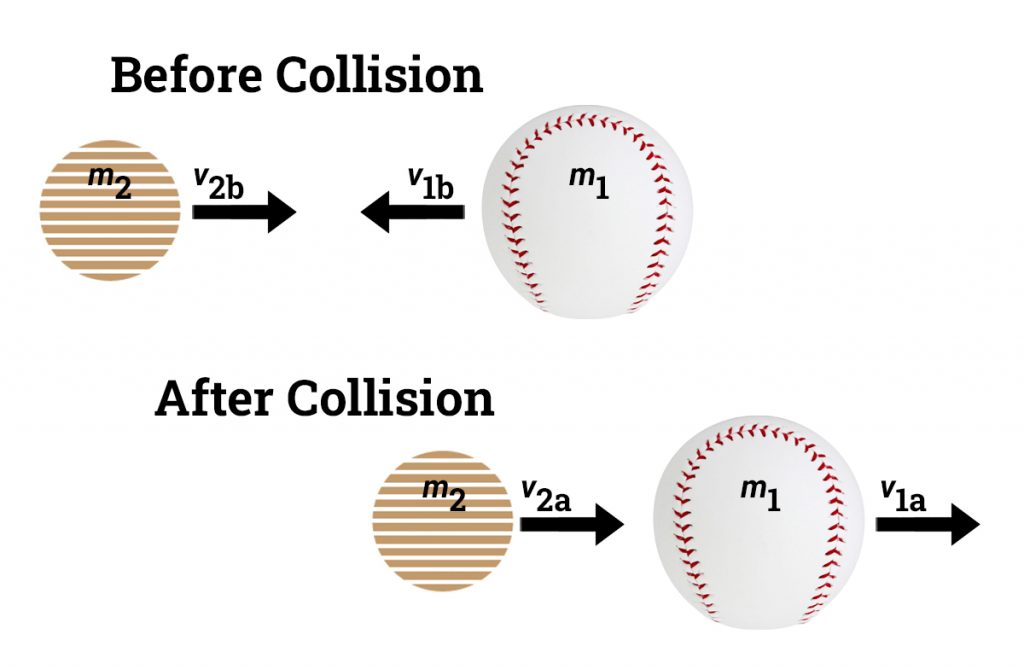
What is the Sweet Spot???
Scientifically trying to describe the sweet spot on a baseball or softball bat is not as simple a task as it might seem, because there are a multitude of definitions of the sweet spot:
- the location which produces the least vibrational sensation (sting) in the batter’s hands
- the location which produces maximum batted ball speed
- the location where maximum energy is transferred to the ball
- the location where coefficient of restitution is maximum
- the center of percussion
- the node of the fundamental vibrational mode
- the region between nodes of the first and second vibrational modes
- the region between center of percussion and node of first vibrational mode

To keep it simple, what we are most interested in knowing is what section of the bat rebounds balls the fastest and the furthest.
See a bat in action as it reveals the Sweet Spot Zone
This is how your bat BENDS and creates vibrations when you swing and hit a baseball or softball. Below is a Mode Shape, the vibrational shape of the bat after hitting a baseball or softball:
![]()
As you can see, the entire Sweet Spot Zone (the space between the 2 dots on the barrel) is the area on your bat barrel with the least amount of vibrational wave action created by the balls impact. The red dot is bending Node #1 and the black dot is bending Node #2. The less bat vibration where you hit the ball means more impact energy from the bat is transferred into the ball and the faster and further the ball will fly off the bat! IF you hit balls below the sweet spot, the violent vibrations will activate the Modes in the handle and “sting” your hands. Learning about and practicing the science behind this novel product, will make you a much better batter.
This device locates the Sweet Spot center on any baseball or softball bat
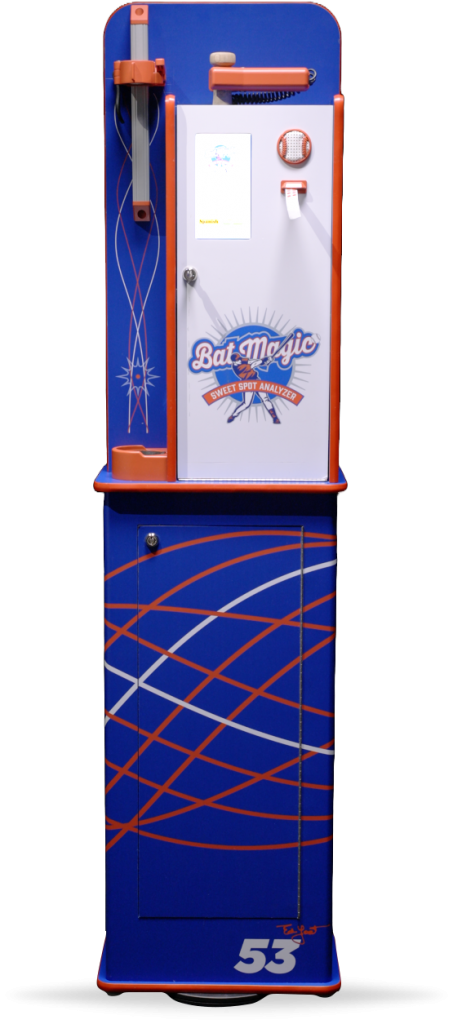
- This device computer analyzes a balls impact vibration patterns on the barrel of any baseball or softball bat by plotting the G force impact rates at 5mm intervals and then points a laser light on the bat’s center of the sweet spot
- he total space between vibration crossover points known as nodes 1 & 2, is the “Sweet Spot Zone”. This is the best hitting area on the bat and the area where homeruns are hit from
- The exact center of the sweet zone is the “Sweet Spot Center”
Sample Bat Magic Test Results
Below is a sample of the test data showing the location of the “Sweet Spot” on one tested Bat. The sweet spot is the area of the bat barrel which will impart the maximum amount of energy to a baseball when struck. Each bat has it’s own signature sweet spot location.
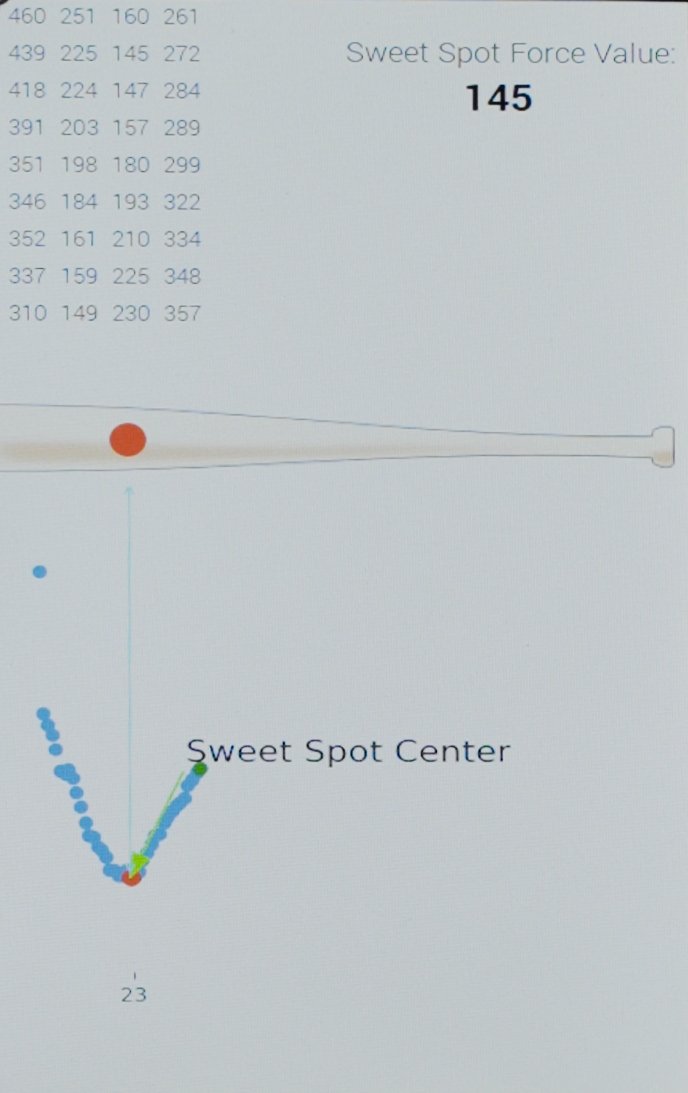

Flexural Bending Vibrations in a Bat
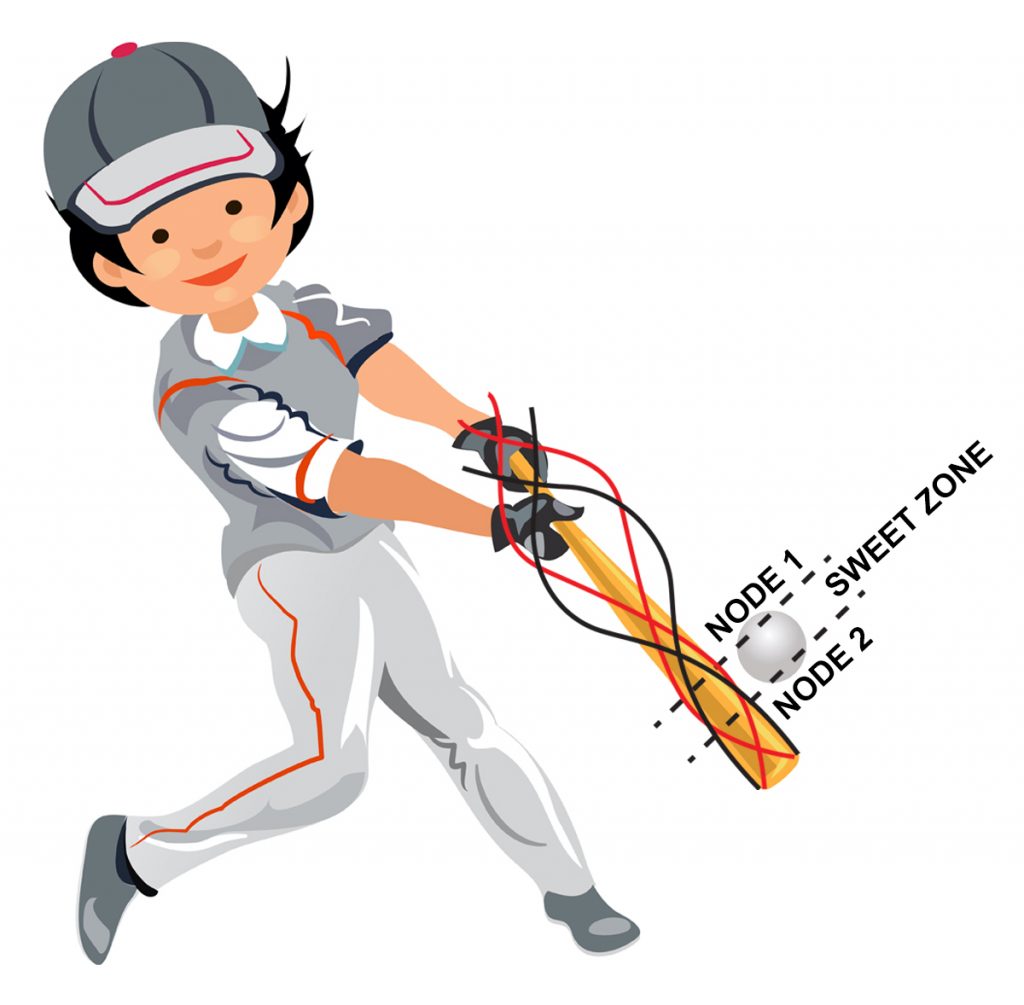
A bat vibrates at multiple frequencies when it collides with a ball. How much energy is transferred to the ball instead of spreading through the bat and the batter’s hands, depends on where the collision occurs. A bat vibrating at its fundamental frequency (in blue) has a node of zero vibration at x dimension from the barrel end (Node 1). At a second frequency (in red), a bat has another node at y dimension down the barrel (Node 2). Hits between the two nodes, produce minimal vibration and transfer more energy from the bat into the ball at both frequencies. This region is the “Sweet Spot Zone”.
Every baseball bat, softball bat has a “sweet spot.” But every hitting instrument has a uniquely placed sweet spot centerline, sized and located sweet spot and zone; depending on the material, length, diameter of the barrel and handle and shape. If when a baseball for instance hits a bat in the wrong place, your hands “sting”! This means the force of the collision has excited waves or vibrations called modes. When the ball is hit at a node it will not sting your hands. A mode generates 2 nodes or a position of zero displacement. Bats consist of 2 major nodes; this region between the 2 nodes is proverbially known as the “sweet zone.” Higher frequency modes affect the ball speed, but can hardly be felt by the batter.
A collision near the node reduces the vibrations felt by the hand and increased rebounding effects on the ball. The existence of the “sweet spot which is the center of the ‘sweet zone”, is mainly because the vibrations do not agitate at that particular node. Impact on the first node will not excite the first mode but will affect the second mode. This is also true for the relationship of the second node’s relationship to the first mode.
Bat Magic Bat Analyzing Highlights:
- A mechatronic methodical testing device to locate the uniquely located sweet spot or sweet spot zone on individual baseball bats, softball bats herein referred to as the hitting instrument.
- A method that allows one to easily mark the sweet spot center locations on the hitting instrument
- A method that provides for easily marking out a visual x/y axis denoting the hitting target area on the hitting instrument
- A method that allows one to be able to easily apply/remove/replace an impact impression sticker label over the hitting instrument barrel, to be used to easily discern exactly where each ball is striking the hitting instrument in relation to the most ideal location
This excellent training device will greatly improve a batter’s performance by allowing the batter to instantly know how well or how poorly his/her hitting accuracy is.
“Parts” of the BAT

Typical BAT dimensions and barrel constructions
Baseball, professional
Bat Length – 31-34 in. (79-86 cm)
Barrel Diameter – 2.625 in. (6.7 cm)
Barrel Length – 3-5 in. (8-13 cm)
Barrel Material Type – Wood, Solid
Baseball, college and high school
Bat Length – 31-34 in. (79-86 cm)
Barrel Diameter – 2.625 in. (6.7 cm)
Barrel Length – 3-5 in. (8-13 cm)
Barrel Material Type – Wood, Solid
Youth Baseball
Bat Length – 18-30 in. (46-76 cm)
Barrel Diameter – 2.25 in. (5.7 cm)
Barrel Length – 8-10 in. (20-25 cm)
Barrel Material Type – Aluminum or composite hollow
Softball
Bat Length – 33-34 in. (84-86 cm)
Barrel Diameter – 2.25 in. (5.7 cm)
Barrel Length – 10-14 in. (25-36 cm)
Barrel Material Type – aluminum or composite hollow
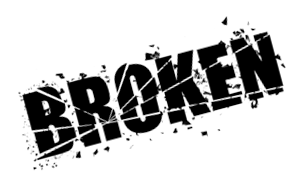 BATS
BATS
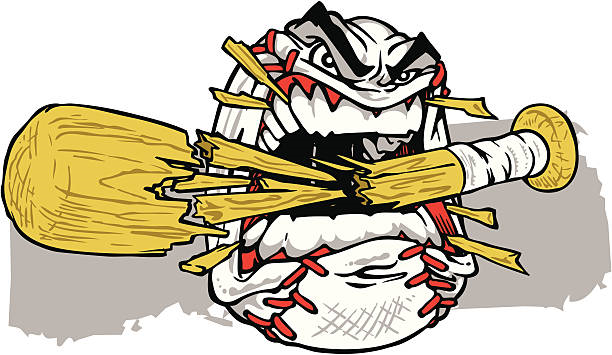
Why do wood bats break??? There is nothing more frustrating than getting that perfect pitch to swing at and POOF, your bat blows apart and the ball goes nowhere.

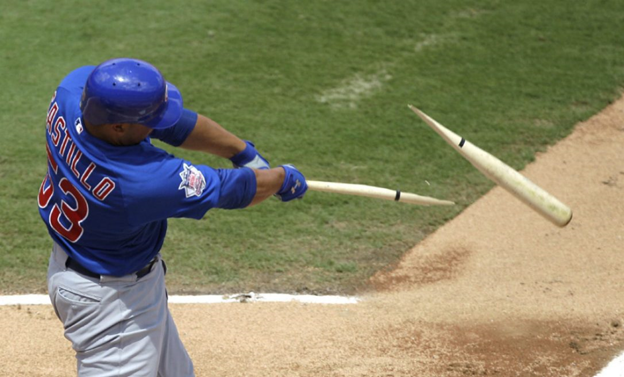
In this photo above, you can clearly see that the bat broke with the wood grain running vertically and “perpendicular” to the incoming ball, NOT “parallel” with the grain. This situation will result in either a broken bat or a poorly hit ball.

In this photo above, you can clearly see the proper hitting direction of the grain (red arrow) which should contact the ball. You can hit on either side of the bat’s directional grain as long as the “Trademark” symbol faces the ground or the sky. However, the Trademarks are not always perfectly placed which is why you should always double check the Trademark placement by using the “Wood Grain Orientation Mirror” on the Bat Magic device. Simply rotate your hanging bat until the wood grain aligns with the center line on the mirror for sweet spot testing and then align with the centerline tool at the end of the bat cradle station.
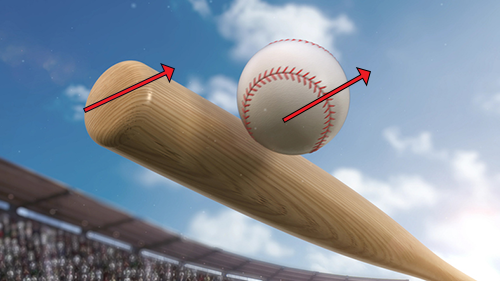
In this photo above, you can see the hitting face of bat has the wood grain running parallel with the direction of the swing and parallel with the direction of the ball flying off the bat’s surface
Bat Magic uses a mirror to make it simple for you to hold the bat properly so you will hit every ball “WITH” the direction of the grain and not “AGAINST” the grain
